Intro
Looking for a Beginner's Telescope? Let us help You!
Chapter 1
Chapter 2
Chapter 3
Now you need to mount your scope!
Chapter 4
Accessorise, Accesorise (with eyepieces and filters)
Chapter 5
Chapter 6
Caring and Collimating your Telescope
Chapter 7
Solar Observations and a How-To guide on making a solar filter

After fiddling with your telescope for a while, you might reach a point where you start to wonder how you can improve your viewing experience. That’s where visual accessories, Adapters, and Astronomy Publications can set you on the next level of your astronomical journey.
Eyepieces and filters expand the sky viewing experience. Over here, we give you an idea of the types of eyepieces you can get for your telescope and their specific application.
No telescope works without an eyepiece. So, just what is a telescope eyepiece? They come in a range of sizes, magnification factors, styles, types and manufacturers. To understand how your telescope's eyepiece works with your telescope towards understanding the power (or magnification) achievable, read on.
First, we have to understand Focal Length
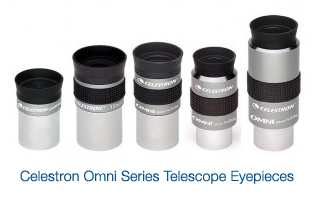
Focal length is typically measured in mm, and is the clearest marker of how powerful your telescope is. It refers to to the distance between the lens or primary mirror, to the point where the telescope is in focus. This point is known as the Focal Point.
The longer the focal length of your telescope, the more powerful it is, the larger the image, and the smaller the field of view. For example:
A telescope with a focal length of 2000mm has twice the power and half the field of view of a 1000mm telescope.
Calculating Magnification (Power)
To determine the magnification of your eyepiece, simply divide the focal length of your telescope with the focal length of your eyepiece. Check out this awesome Eyepiece Magnification Calculator if you're getting stuck.
Thus, by using different eyepieces of different focal lengths, you'll be able to experience different magnifications.
e.g. a 25mm eyepiece used on a telescope with a 1000mm focal length would yield a power of 40x (1000 / 25 = 40) and a 10mm eyepiece used on the same telescope would yield a power of 100x (1000 / 10 = 100). Remember, the longer the focal length of your eyepiece, the less its magnification, and the wider your field of view.
| A word of warning There are practical upper and lower limits for telescopes. Determined by different optical laws and the nature of the human eye, there are maximum limits to which you'll be able to push your telescope. As a rule of thumb, the Maximum Usable Power (or Highest Usable Magnification) of your telescope will be 60x its aperture (in inches) under normal conditions. e.g. The maximum power on a 4 inch telescope : 4 x 60 = will be 240x. |
As power increases, sharpness and detail decreases - because you're pushing your telescope to the limits of its capability, the exit pupil will decrease in size (read more about exit pupils below), resulting in darker images. Higher powers are used mainly for lunar, planetary, and binary star observations, as they emit a larger amount of light.
Be wary of manufacturers that advertise ridiculously high-powered telescopes (e.g. 750x) with a mere 6mm aperture. Both false and misleading, these manufacturers leverage the fact that most consumers are in the dark about how telescopes operate. They pander to the common misconception that magnification is the most important thing in astronomical telescopes.
What's this about Exit Pupils?
The exit pupil is the image of the object that's been formed by your eyepiece. It's also where you place your eye to see the full field of view. For an eyepiece with a particular focal length to work well with your telescope, you need to determine the exit pupil. The size of your exit pupil is merely:
As you increase the power of your scope, the smaller your exit pupil becomes. Your eye's pupil cannot get wider than 7mm, nor smaller than about 0.5mm.
Ideally, you should only purchase eyepieces that - when combined with your telescope - provides you with exit pupils no larger than 6mm, and no smaller than 2mm for optimum effect.
Telescope Eyepieces
-with credits to Universe Today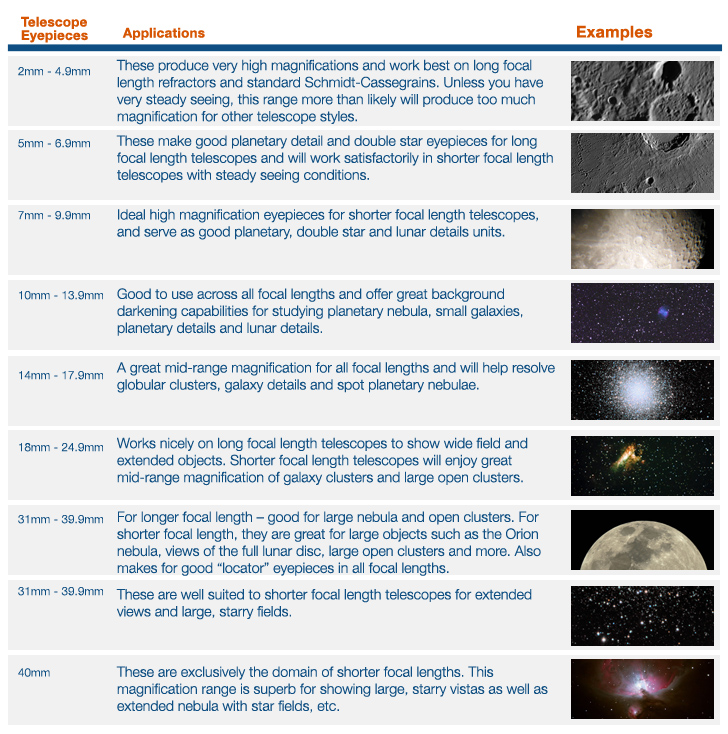
Once you've selected an eyepiece, calculate the magnifications they will produce with your scope. For determining maximum power, remember that a good rule of thumb is to use not more than 60x per inch of aperture with apertures up to 6". Higher magnifications may still look nice, but are unlikely to reveal any additional detail. Realistically, the atmosphere will limit your viewing to a maximum of about 300x, no matter how large your telescope's aperture.
Basically, you'll be choosing low and medium power eyepieces in increments to "frame" the subject, and high powered eyepieces to reach optimum contrast and resolution for viewing planets and double stars.
RED LIGHT
A red light torch is one of the staple accessories that an astronomer needs. It has been scientifically proven that red light helps us maintain our night vision capabilities after our eyes adapt to the dark environment, allowing us to see more stars in the night sky. Red torches are also useful to help you read star maps and move around in the dark without exposing yourself to bright lights. When getting one, it’s better to get a model with adjustable brightness.
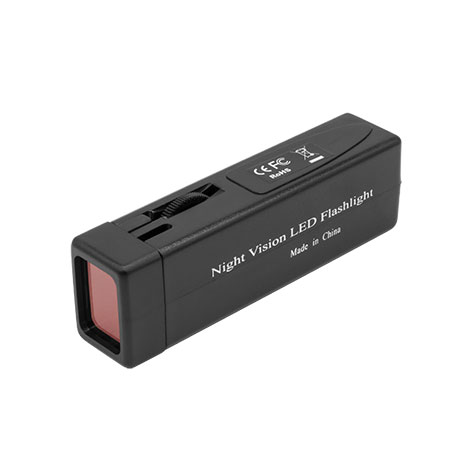 SkyWatcher LED Red Flash Light
SkyWatcher LED Red Flash Light
PLANISPHERE
For beginners in astronomy, trying to get your bearing in the night sky can be a real challenge. One of the best accessories that you can get to help you better navigate the night sky is the Planisphere. For an average joe, they look like two pieces of circular cardboard cut-outs fastened together. But this simple-looking accessory can actually help you identify the bright stars in the night sky at any particular time. Planispheres require a little bit of learning, but in the long run, they are definitely worth it.
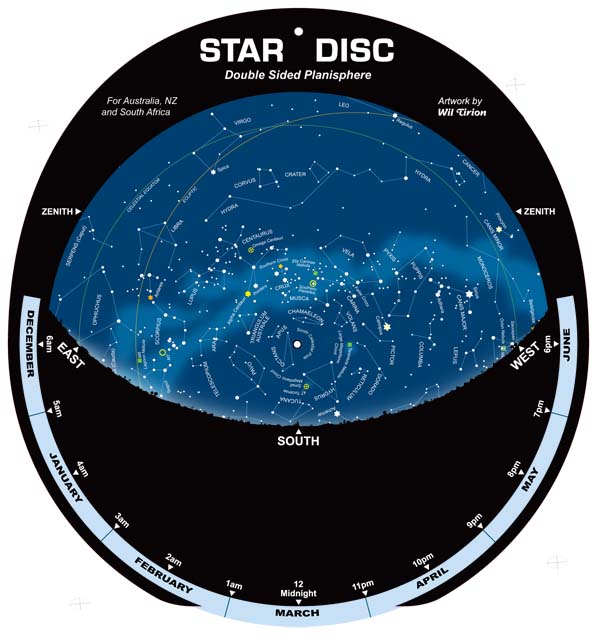 Astrovisuals Planisphere Star Disc
Astrovisuals Planisphere Star Disc
BARLOW LENS / Power Mate
If you’ve been wanting to extend the magnification of your existing eyepieces, a Barlow lens or Power Mate is exactly what you need. These optical devices are also known as focal extenders. As the name suggests, they extend the focal length of your telescope which increases the magnification. Early types of Barlow lenses are known to distort image quality, but modern ones managed to greatly reduce this issue. There is a limit to how much magnification they can increase, but nevertheless, they are a good option worth considering to get that extra magnification power.
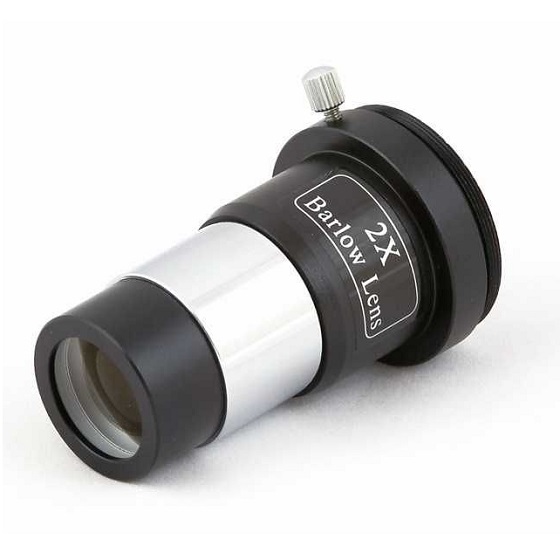 SkyWatcher 2x 1.25” Achromatic Barlow Lens w/ Camera Adapter
SkyWatcher 2x 1.25” Achromatic Barlow Lens w/ Camera Adapter
TELESCOPE FILTERS
When starting out with astronomy, many of us would think that filters are not something that we would ever need. Some might even think that filters are just some fancy ways for us to “colorize” our image for aesthetic purposes. The truth is that filters are crucial for us to see deeper sky objects in greater detail by adjusting the sharpness, contrast, and light exposure that we see through our telescopes.
All filters are not created equal. Different telescopes require different types of filters to fit and depending on what you’re trying to view, you will require different types of filters. For starters, we have the solar filters used to view the sun, lunar filters to view the moon, and planetary filters to view all the different planets.
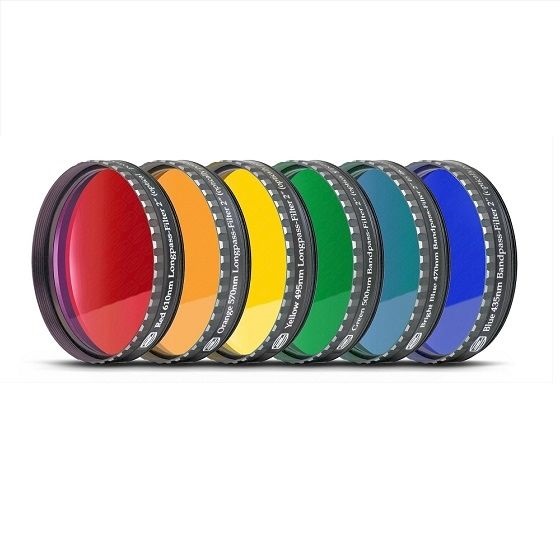 Baader 2" Colour Filter Set for Moon and Planetary
Baader 2" Colour Filter Set for Moon and Planetary
STAR DIAGONAL
The eyepieces of Reflector telescopes are nicely situated on the side and can easily be accessed regardless of the angle your telescope is pointing at. However, for refractor and Cassegrain telescopes, their eyepiece is situated at the back and is unwieldy to use when the telescope is tilted upwards. This is where the star diagonal comes in. The diagonal functions to redirect the light collected from the telescope, projecting it at an angle into the eyepiece so that it is easier to observe. For terrestrial viewing, you can also convert the flipped images seen through your refractor or Cassegrain telescope to the correct orientation using an erect image diagonal.
Lower quality diagonals can cause image distortions due to imperfections of the reflective surfaces and mirror coatings. In some cases, star diagonals that come included with a telescope may suffer from these issues. It is always a good idea to purchase a high-quality star diagonal or erect image diagonal if you notice distortions in the image.
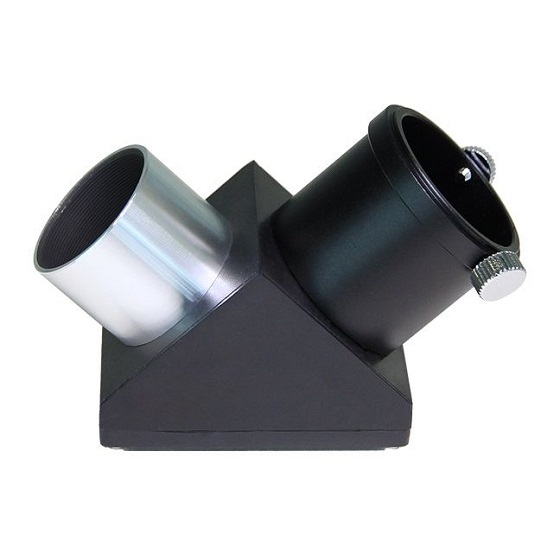 Saxon 1.25" Deluxe Mirror 90-Degree Star Diagonal
Saxon 1.25" Deluxe Mirror 90-Degree Star Diagonal
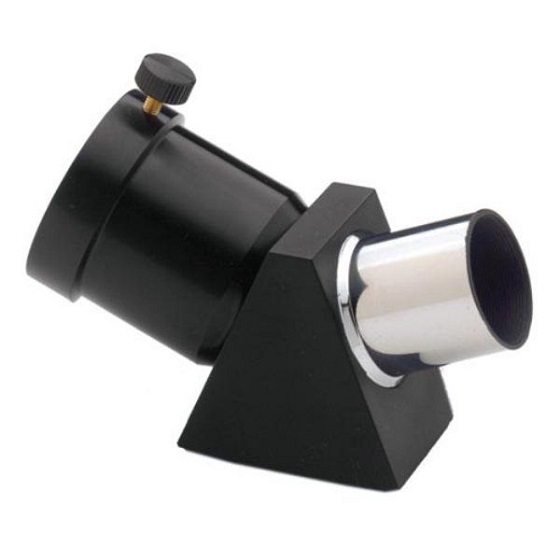 Celestron 45 Degree Erect Image Diagonal - 1.25”
Celestron 45 Degree Erect Image Diagonal - 1.25”
